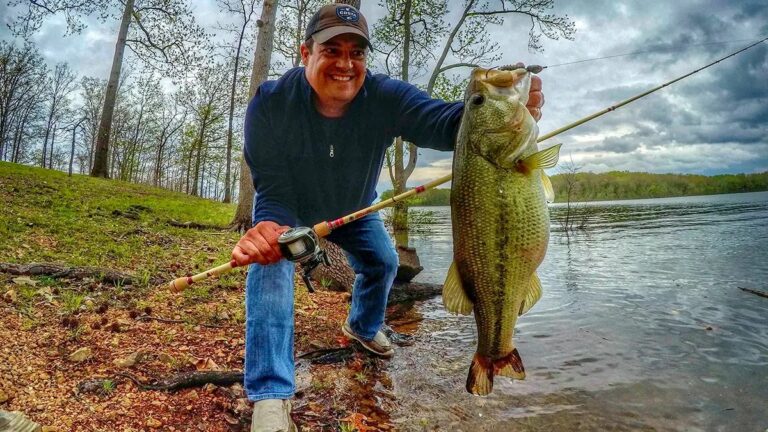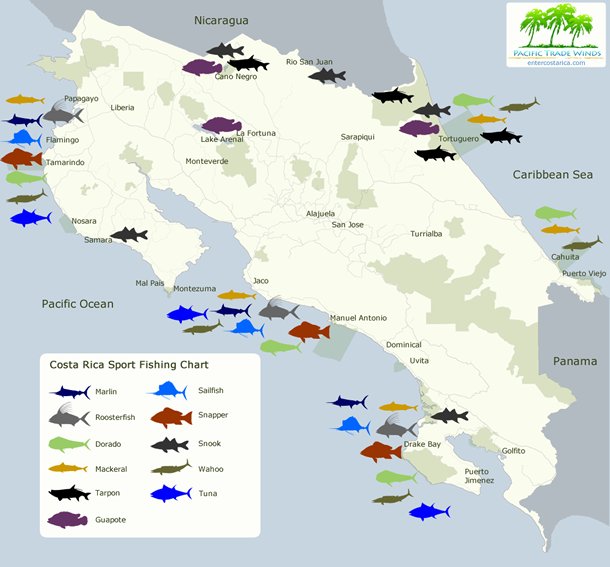Master The Technique: How To Tie Line Onto A Baitcaster
If you’re interested in learning how to attach the line to a baitcaster, you’ve come to the right spot! Tying line onto a baitcaster is a crucial skill for any angler, and once you become proficient, you’ll be fully prepared to head out onto the water and reel in some fish.
This article will guide you through the process of tying a line onto a baitcaster in a step-by-step manner, guaranteeing a secure and dependable connection between your line and reel. So, let’s get started and discover how to effortlessly tie a line onto a baitcaster!
How to Tie Line onto a Baitcaster:
Understanding Baitcasters and Their Components
To effectively tie line onto a baitcaster, it’s important to have a good understanding of the reel and its components. Here, we’ll explore the key parts of a baitcaster and their role in the process of tying the line.
Baitcaster Parts:
The components of a baitcaster reel include the spool, handle, drag system, braking system, and line guide. Familiarizing yourself with these parts will help you in efficiently tying the line.
Line Types for Baitcasters:
When preparing to cast your line, it is crucial to select the appropriate type of fishing line that best suits your needs.
Baitcasters are compatible with different line options, such as monofilament, fluorocarbon, and braided lines.
Each of these options has its unique qualities and benefits, so it is important to choose the line that aligns with your fishing style.
Preparing Your Baitcaster for Line Attachment:
Before tying the line onto your baitcaster, it’s crucial to properly prepare the reel. This includes ensuring the spool is empty, adjusting the drag system, and setting up the braking system. Let’s delve into the necessary steps to get your baitcaster ready for line attachment.
Emptying the Spool:
If you have an existing line on your baitcaster, it’s essential to remove it before attaching a new one. To empty the spool, follow these steps:
- Loosen the drag setting to prevent line breakage during the removal process.
- Unwind the existing line from the baitcaster by turning the reel handle.
- Dispose of the old line properly, as it may be recyclable.
Adjusting the Drag System:
Proper adjustment of the drag system ensures smooth line release during casting and reeling. Follow these steps to adjust the drag system:
- Locate the drag adjustment knob on your baitcaster, usually located on the top or front of the reel.
- Turn the knob clockwise to increase the drag or counterclockwise to decrease it.
- Ensure the drag is set to a moderate resistance level, providing the right balance for your fishing needs.
Setting Up the Braking System:
Baitcasters come with a braking system that controls spool speed during casting. Adjusting the braking system is crucial for preventing backlash and improving casting accuracy. Here’s how to set up the braking system:
- Identify the type of braking system your baitcaster has. It could be either centrifugal or magnetic.
- For centrifugal systems, adjust the brake controls on the side plate of the reel. Engaging more brakes slows down the spool’s rotation.
- For magnetic systems, locate the magnetic brake adjustment dial on the side plate. Increase the braking force by turning the dial clockwise.
- An ideal braking setting provides enough control without hindering casting distance.
Step-by-Step Guide to Tying Line onto a Baitcaster:
Now that your baitcaster is prepared, it’s time to tie the line onto the reel. Follow this step-by-step guide to ensure a secure and efficient line attachment.
Gather the Required Materials
Before you start tying the line, gather the necessary materials. You will need:
- A suitable fishing line of your choice.
- A pair of scissors or line clippers for cutting the line.
- A baitcasting reel and rod combo.
- A strong and secure connection knot, such as the Palomar knot or the Uni knot.
Thread the Line Through the Line Guide:
The line guide on a baitcaster reel helps direct the line onto the spool smoothly. Here’s how to thread the line through the line guide:
- Identify the line guide, which is usually located on the front of the reel.
- Pass the line through the line guide, ensuring it goes in the direction of the spool.
- Leave a few inches of excess line to work with during the knot-tying process.
Securely Attach the Line to the Spool:
Attaching the line securely to the spool is vital for reliable performance. Use the following steps to ensure a strong connection:
- Hold the line against the spool with your thumb to prevent slippage.
- Make an initial loop around the spool with the tag end of the line.
- Create an overhand knot with the tag end, taking care to leave a small loop.
- Pass the tag end through the small loop, creating a simple knot around the spool.
- Tighten the knot by pulling the tag end and mainline simultaneously.
- Trim any excess tag end with scissors or line clippers.
Spool the Line Onto the Reel:
After securing the line to the spool, it’s time to start spooling. Follow these steps to properly load the line onto the reel:
- Close the bail arm (if applicable) or engage the line release mechanism on the baitcaster.
- Hold the line with your spare hand, applying gentle tension to ensure it coils neatly onto the spool.
- Turn the reel handle slowly and steadily, allowing the line to spool evenly across the entire width of the spool.
- Continue spooling until the desired line capacity is reached, leaving a small gap below the spool rim to prevent overfilling.
Test the Line for Proper Attachment
Once the line is spooled onto the baitcaster, it’s important to test the attachment to ensure it’s secure. Perform the following checks:
- Gently tug on the line and check for any slippage or movement. A properly attached line should resist any pulling force.
- Inspect the connection knot and the line guide to ensure everything is in place and secure.
- If any issues are detected, repeat the steps above, paying careful attention to knot tying and spooling.
Proper Line Tension for Optimal Performance
In addition to tying the line onto the baitcaster, maintaining proper line tension is crucial for optimal performance. Improper line tension can lead to backlash, reduced casting distance, and decreased sensitivity. Here are some tips for achieving and maintaining proper line tension:
Tighten the Drag System
Before casting, make sure the drag system is adjusted properly. Too loose or too tight of a drag setting can impact line tension. Follow these steps:
- Set the drag to a moderate resistance level based on the target fish species and line strength.
- Ensure the drag is tight enough to prevent slippage during hooksets but also allows line release when a fish pulls against it.
- Regularly check and adjust the drag setting throughout your fishing session, especially if you encounter larger or more aggressive fish.
Apply Thumb Pressure
When casting with a baitcaster, applying thumb pressure on the spool during the cast helps control line tension. Remember these thumb pressure guidelines:
- Use your thumb to lightly press against the spool during the casting motion.
- Release thumb pressure at the right moment to allow the line to flow freely off the spool.
- Gradually increase or decrease thumb pressure based on the weight of your lure and desired casting distance.
Reel in Line Smoothly
To maintain proper line tension while retrieving, follow these techniques:
- Reel in line smoothly and steadily, avoiding jerky or rapid movements that may cause slack or backlash.
- Avoid reeling too quickly, as it can generate excess line tension and increase the likelihood of backlash.
- Keep an eye on the line for any signs of looseness or unraveling, adjusting your reeling speed accordingly.
Tips and Tricks for Tying Line onto a Baitcaster
To make the line-tying process even more seamless and effective, consider implementing the following tips and tricks:
Moisten the Knot:
Before tightening the connection knot, moisten it with saliva or water. This reduces friction and heat generation, allowing for a smoother and more secure knot.
Loop-to-Loop Connection for Quick Line Changes:
Consider using a loop-to-loop connection when attaching a leader line or switching between different line types. This method provides a fast and convenient way to change lines without retying knots.
Practice Knot Tying Techniques:
Take time to practice tying various fishing knots, such as the Palomar knot, Uni knot, or Improved Clinch knot. Mastering different knot techniques will enhance your overall angling skills and ensure reliable line attachments.
Regularly Inspect the Line:
Inspect your line for any signs of wear, abrasion, or damage. Regularly replacing old or worn line prevents unexpected line breakage and ensures optimal fishing performance.
Seek Professional Guidance:
If you are new to using baitcasters or struggle with line attachment, consider seeking advice from experienced anglers or fishing professionals. Their expertise can help you refine your technique and overcome any challenges you may encounter.
Faqs for How To Tie Line Onto A Baitcaster:
1. What type of knot should I use to tie the line onto a baitcaster?
The most commonly used knot for tying line onto a baitcaster is the Palomar knot. It is a strong and reliable knot that is easy to tie.
2. How do I tie a Palomar knot?
To tie a Palomar knot, start by doubling the line and passing it through the eye of the baitcaster. Then, tie an overhand knot with the doubled line, forming a loop.
Finally, pass the baitcaster through the loop and tighten the knot by pulling both ends of the line.
3. Is there any special technique to ensure a secure knot?
To ensure a secure knot, make sure the line is moistened before tightening the knot. This reduces friction and allows the knot to tighten properly. Additionally, after tying the knot, pull both ends of the line firmly to ensure it is properly secured.
4. What should I do if the line keeps slipping after tying the knot?
If the line keeps slipping after tying the knot, you may need to retie the knot using a different technique. Alternatively, you can try using a different type of knot that provides better grip and holds the line securely.
5. Are there any other knots that can be used to tie line onto a baitcaster?
Yes, there are other knots that can be used to tie line onto a baitcaster, such as the improved clinch knot, the uni knot, and the San Diego jam knot. These knots are also reliable and commonly used by anglers.
6. Any tips for beginners on tying line onto a baitcaster?
For beginners, it is important to practice tying knots before heading out to fish. This will help build confidence and ensure that the knot is tied securely. It is also helpful to watch instructional videos or seek guidance from experienced anglers to learn different knot tying techniques.
Final Thoughts
mastering the technique of tying line onto a baitcaster is essential for every angler. By following the step-by-step process outlined in this article, you can ensure a secure and reliable connection. Remember to choose the right knot for your fishing line, such as the improved clinch knot or the Palomar knot, to maximize its strength and prevent slippage. With a firm grip on the spool and a steady hand, you can confidently tie the line onto a baitcaster and ready yourself for a successful fishing adventure.

